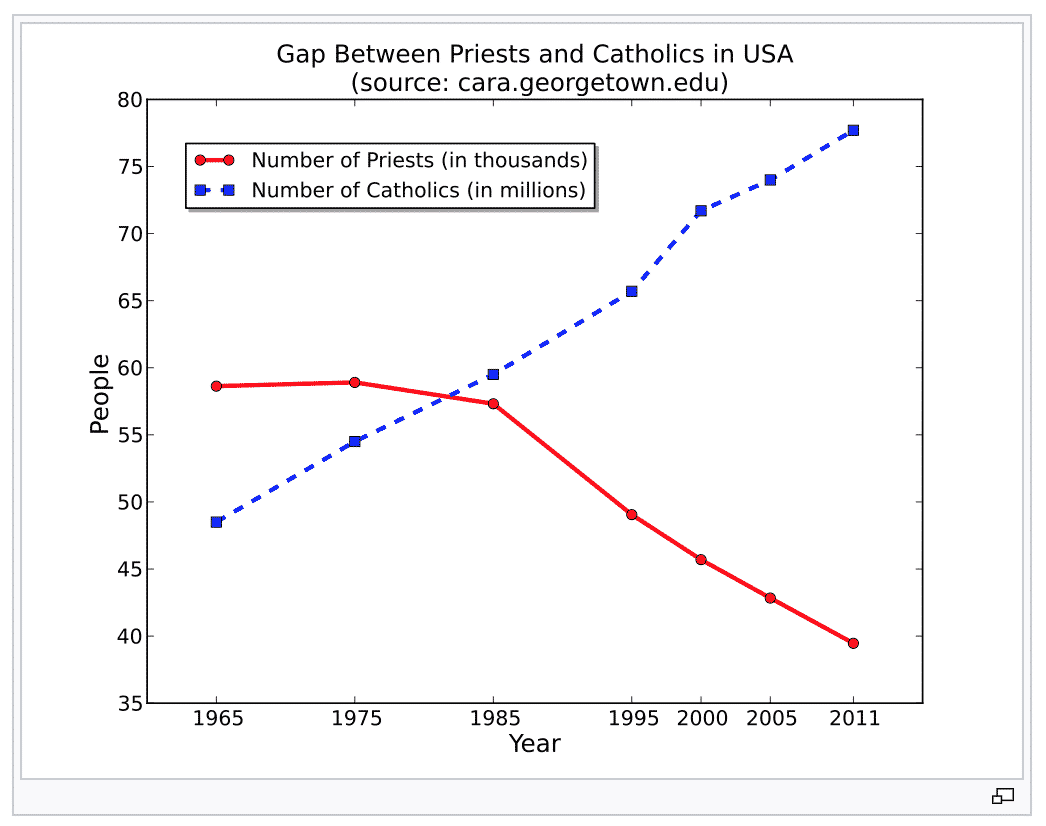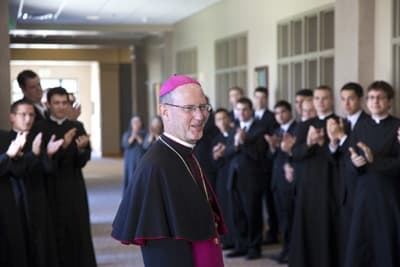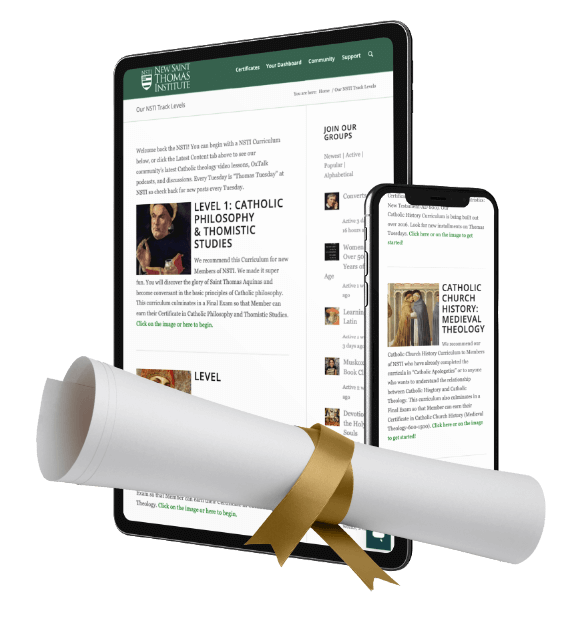STAY INFORMED
Must Watch Videos
Our Sad Decline in Priestly Vocations: Most Priests will Retire in 2015-2025
I recently learned from Deacon Greg Kandra that Our Lady of Providence Seminary of of the Diocese of Providence Rhode Island has zero new seminarians:
Over the past five years, between two and six men have entered the seminary every fall but that’s not the case this year.
“Entering the fall we don’t have any new seminarians applying for the Diocese of Providence, which is rare,” Fr. Chris Murphy, the Catholic Diocese of Providence’s assistant vocation director, said Tuesday.
“I cannot remember in recent memory when the last time was,” he added.
A look back at the numbers shows a declining trend. Five men entered the seminary in 2012 and six entered in 2013, then the numbers drop to three, two and four in the years that followed.
Over the years, whenever the “priestly shortage” comes up in conversation, someone is quick to reply with some encouragement like this: “Oh yes, but we have so many young orthodox vocations! Things will change in a few years!”
I agree with this encouraging fact: We have some great seminarians! I’ve personally taught Catholic seminarians in America and in Rome and I can confirm that there are some dynamic, orthodox, and impressive seminarians moving into the sacerdotal pipeline.
But I am also aware of a gaping problem that hardly anyone mentions. The seminarian numbers are not there. We are about to fall off a demographic cliff of priestly vocations.
- Yes, an impressive seminarian or deacon-seminarian visits your parish during the summer and does fantastic work.
- Yes, you see lots of faces on the “Meet our Seminarians” color poster in the narthex after Mass.
- Yes, you’re bishop announces yet another round of ordinations this year.
Praise God! I rejoice in all of it…but still…the numbers are lacking. Let’s take a look at priestly demographics:
For priests, we need to pray for quality and quantity:
Here is table of the number of priests in the USA from 1930 to 2015:

The number of priests exploded in 1950 (partly through migration) and peaked out in 1970. After 1975, you see a slow but steady decrease in the number of priests until the decline becomes steep around 1990.
More troubling is the fact that the tsunami of priests ordained from 1970-1980, will be reaching retirement age between the years 2015-2025 (age 25 + 45 years of service = retirement age 70).
Discovering the 1 Priest to every Catholic Ratio:
We have already begun to feel the scarcity of priests and you’ll understand why when you examine the numbers in light of the ratio of priest per Catholics. Check out these numbers:
- In 1950, there was 1 priest to every 652 Catholics in the United States.
- In 2010, there was 1 priest to every 1,653 Catholics in the United States.
- In 2016, there was 1 priest to every 1,843 Catholics in the United States.
A numeric study shows that the tipping point in the USA happened around the year 1983. This is when our priest/Catholics ratio began to tank:

When it comes to priest/Catholics ratio, our priestly manpower is 33% of what it was 1950. Meanwhile there millions more lay Catholics in the pews.
And depending on the city, the ratio can be much worse. Chicago, New York, and Los Angeles have pretty discouraging ratios, but none are hurting as badly as my neighboring diocese of Dallas:
- Diocese of Dallas: 1 priest to every 6,229 Catholics.
- Diocese of Los Angeles: 1 priest to every 3,931 Catholics.
- Diocese of New York: 1 priest to every 2,055 Catholics.
- Diocese of Chicago: 1 priest to every 1,624 Catholics.
Meanwhile there are model dioceses that have wonderful ratios that beat even the 1950 national ratio:
- Diocese of Lincoln: 1 priest to every 598 Catholics.
And the Priestly Fraternity of Saint Peter (FSSP), which offers the Latin Mass from the 1962 Missale Romanum currently has this ratio in its parishes:
- FSSP: 1 priest to every 250 Catholics.
Vocation Decrease among the Jesuits
Compare the growth of the FSSP to that of the global membership of the Society of Jesus:
- In 1977, the Jesuits had 28,038 members.
- In 2016, the Jesuits had 16,378 members.
The Jesuits have declined 41.5% since 1977. The average age of a Jesuit priest in 2018 is 63.4 years old. Considering that mandatory priestly retirement is age 70, this does not look good for the Jesuits. They will decline by more than 50% in the coming decade. If things don’t change, there will be less than 10,000 Jesuits on earth in the next few years.
[For reference, there are 6,058 (male and female) Dominicans on planet earth in 2018. That’s the size of three Texas high schools.]
Sad but True (plus some Hope):
It is true that we have many great young men in formation to be holy Catholic priests. I’ve spent hours talking with them after class and I know that we will have an excellent crop. The sad news is that it is small crop. A priest is only one man and if you spread him over 3 parishes, he will be less effective.
My prediction is that we will see a great Catholic migration over the next three decades. As that surge of vocations from 1970-1980 begins to retire and depart to their reward, we will see massive parish closings and consolidations. Priests will be rare. It is already obvious that bishops and dioceses like Lincoln Nebraska attract vocations to the holy priesthood. These bishops and their dioceses will thrive. Meanwhile, dioceses like Providence will shrink while they try to import priests from other parts of the world.
The solution is to pray for vocations, but also beg the question:
Why does Lincoln, Nebraska have a plethora of vocations (1 priest to every 598 Catholics!) while others are not only short on vocations but losing priests year after year?
- Is it liturgical?
- Is it ethnic or based somehow on immigration?
- Is it doctrinal?
- What leads young men to inquire about a priestly vocation?
- How do they organize their altar server programs?
- Does youth ministry play a role or not?
- How do pastors play a role?
- To which seminaries does each diocese send seminarians?
- How does seminarian retention rate differ from diocese to diocese?
- How is the bishop involved in the vocation process?
If “coffee is for closers,” Bishop Conley of Lincoln, Nebraska is drinking Roman double espressos. 1 priest to every 598 Catholics. Someone should study the vocations process in place under Bishop Conley of Lincoln.

My personal acquaintance with Bishop Conley (he helped guide me into the Catholic Church in 2006) is that he is orthodox, Thomistic, dignified, fatherly, and favors the template of Ratzinger’s “Spirit of the Liturgy.” And if I’m honest, every single impressive seminarian that I meet…is shaped from the same mold. Like begets like. Like father, like son.
And even if you aren’t on board with the template of “orthodox, Thomistic, dignified, fatherly, Spirit of the Liturgy,” the numbers don’t lie.
Pray for holy bishops, holy priests, and holy seminarians!
[reminder]How is your part of the world doing with priestly vocations? What makes for a good seminarian?[/reminder]
Dive Deeper

GET CONFIDENT IN YOUR FAITH
Explore the fascinating world of Catholic teachings with Dr. Marshall. Together you’ll unpack the brilliant answers the Church gives to tough questions about the Faith. The best part: you go at your own pace. Start this exciting journey today.
